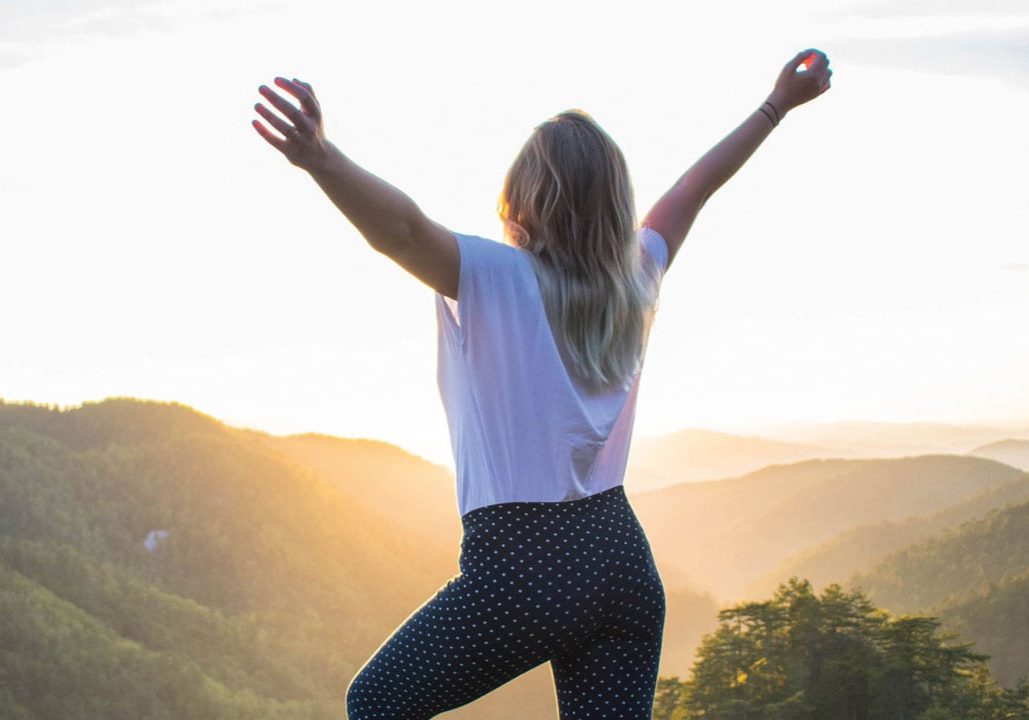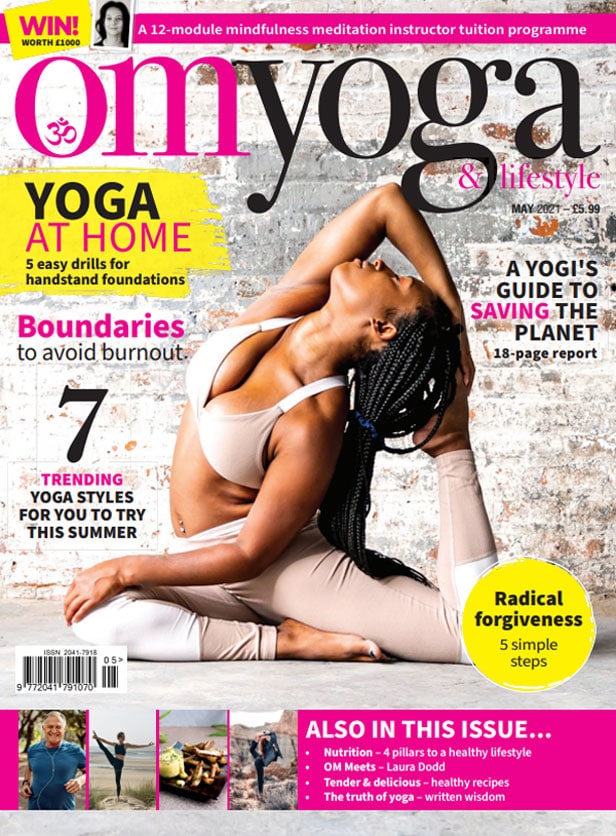
The inner journey
Trust your intuition: reclaim your power and discover the true yoga student within. By Lauren Bloxham
The inner journey really is the final frontier. Moving away from the safety of a regular guided yoga class, we embark on the deep space adventure of self-discovery. It’s the moment of realisation that the pace of the class isn’t aligning with something deeper or more rhythmical within us, it feels as though the offerings of the class aren’t meeting us where we need to be. Perhaps we lose momentum for practice, maybe we outgrow classes and teachers…if we’re committed, we might begin the journey of finding a new class or teacher who meets us where we are. Or maybe, just maybe, we’re courageous enough to face the unknown, our own inner abyss, to reclaim our power and to connect with and cultivate the teacher within us – our intuition.
This is the point at which our yoga practice takes all the strength, discipline and spaciousness we’ve developed physically, and turns it inward. It’s the place in which we recognise all the power we’ve given to instruction and knowledge and turn it towards the inner teacher instead. It’s the place where we find a new edge; where we look ahead and see only the unknown. It’s here that our practice becomes about taking a leap of faith, it becomes a journey of self-discovery, of taking responsibility for our experience and of cultivating trust with our own inner guidance system.
This is the space in which we reclaim our personal power, and in reclaiming our power we take direction with a sense of discernment, where we become able to listen to outer guidance and take away only that which is nourishing. In taking responsibility, we begin the journey of understanding the condition of our vital energy when we arrive at the mat or understanding our own needs and finding a willingness to meet them when it comes to our practice. Our application of strength then becomes about making choices which serve to nourish us rather than deplete us or create tension within us.
Inner guidance
It’s so easy to fall into the routine of a regular class or teacher, of knowing and liking a particular style of yoga and of showing up regardless of how we feel or without asking ourselves what we truly need. It’s this regularity and known factor which can make it easy to switch off from our inner guidance. But yoga and the yoga journey is about managing our own vitality, the precious life force that animates us, our passion for life and vigour, our wellbeing and creativity. It’s not always the case that in simply turning up and participating in a regular class, that we’re doing something good for ourselves. Without a developed sense of self-awareness and the strength to adjust, modify and rest when necessary, then all we’re really doing is doing what we’re told. We’re trusting that who we’re practicing with is taking responsibility for us, and that they know what we need. In truth, no one but ourselves has that insight.
Arriving at the mat for self-practice becomes about exercising the discipline of taking that trust in others and applying it to ourselves. Trusting our inner wisdom and meeting our own needs. Becoming intimate with the condition of our energy body is vital; we have to know if we’re depleted and exhausted or if we’re vibrant and buoyant.
We need to understand the difference between how stillness can nourish us and when it’s required, or when dynamic movement is appropriate and when that is the nourishment we need. Simply following instruction is no longer enough and can become counter-productive to the journey of self-discovery.
It’s at the edge of the abyss that we start to take responsibility for our practice; it’s in this space that we open ourselves up to vulnerability, because in exploring we open ourselves to taking wrong turns, to looking different and to exposing our inner world. We open ourselves up to taking a different path, but a path that is unique to us, that honours our fluctuating moods and energy levels, that responds to our need for rest, for stillness, for dynamic or for gentle movement. It’s the space in which we understand our practice needs to be grounding and static or flowing and dynamic, whether we need yoga nidra or mindful breathing. Our yoga practice then takes in the whole picture, rather than being a general class that, whilst feeling good, simply touches the surface of our whole being. Our practice, when guided by our inner wisdom becomes inclusive and leaves no part of us untouched, and so becomes nourishing, deeply nurturing, taps the well-spring of life force within us and frees it to express creatively through movement.
Finding the abyss
To find the edge that empowers us to reconnect inwardly we need to ask ourselves why we’re here. Why are we practicing yoga today? What is it we hope to experience or take away? What does it feel like? What do I need? Am I engaging in a punishing routine or a life affirming journey of exploration? Does my practice feel like an adventure or a walk in the park? Questions to ponder off the mat and before you take your next guided class, or perhaps before you take a leap of faith and guide your own practice.
During practice we need to feel our way into the experience; in any given pose we need to know if we are comfortable, warm enough, if our clothing feels right and helps to free us or feels restrictive and serves to distract us. Does the pose we’re in feel expansive and liberating for our breath and bodies, or does it create tension, conflict even or just not feel right? Asking the pose how it can serve us, offers us the opportunity to listen and to respond to the micro adjustments that might emerge.
All the time we’re questioning, feeling and responding, we’re developing a deeper relationship of trust within us. This is the strengthening and empowering inner work that yoga can really offer us. It’s this work that will serve us off the mat and lead us towards a more fulfilling life outside of our yoga practice. Once we learn to question, to feel and to respond, we can apply the mindset we’ve developed, to our relationships outside of practice, to our work and our experiences in the world. We learn to live a truly creative and expansive life with yoga at its core.
Lauren Bloxham is a registered yoga teacher with the British Wheel of Yoga. Her classes encourage intuitive movement through slow-flowing Hatha Yoga. Visit: blackdogliving.com or find her on Instagram @blackdogliving




